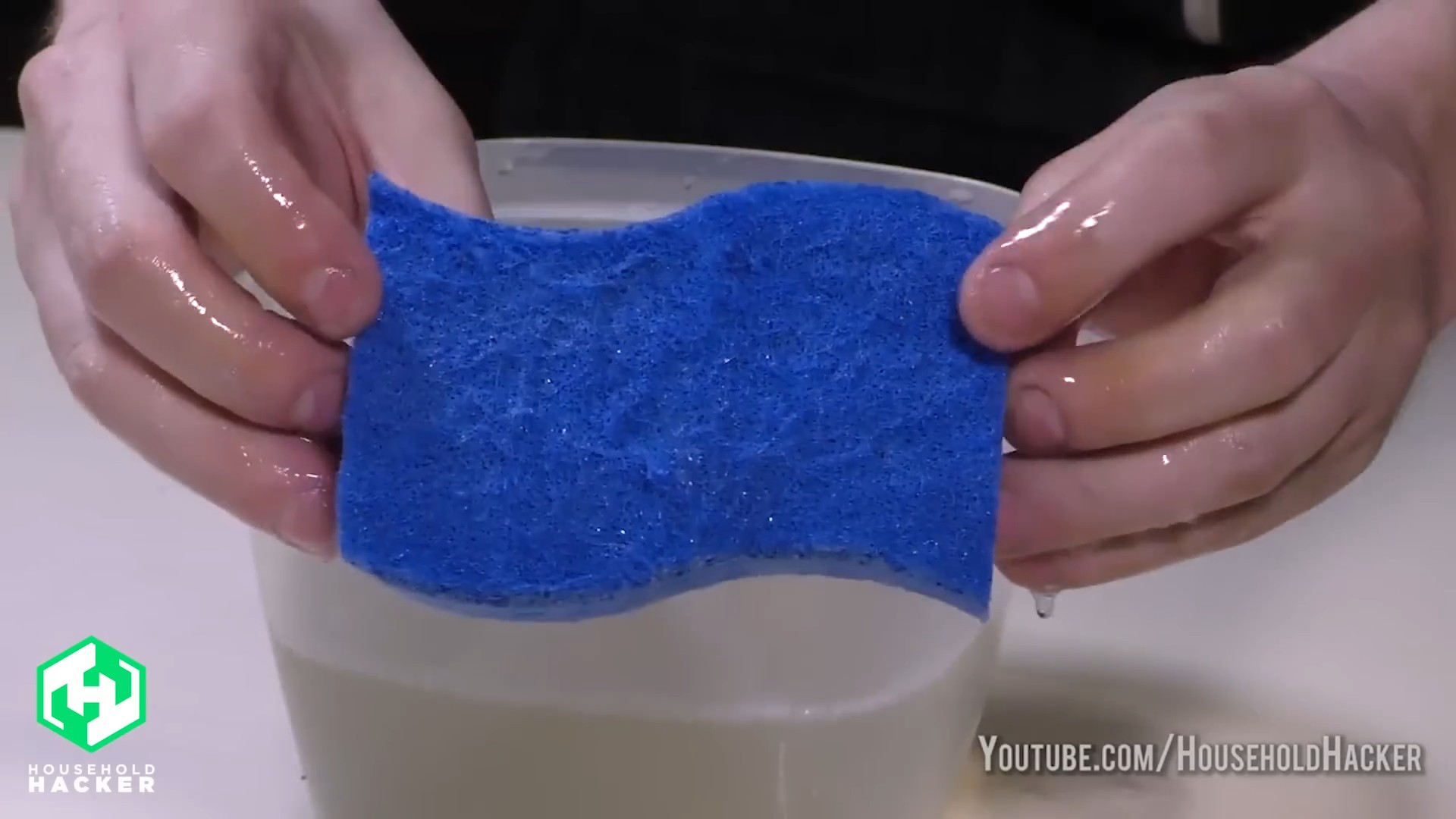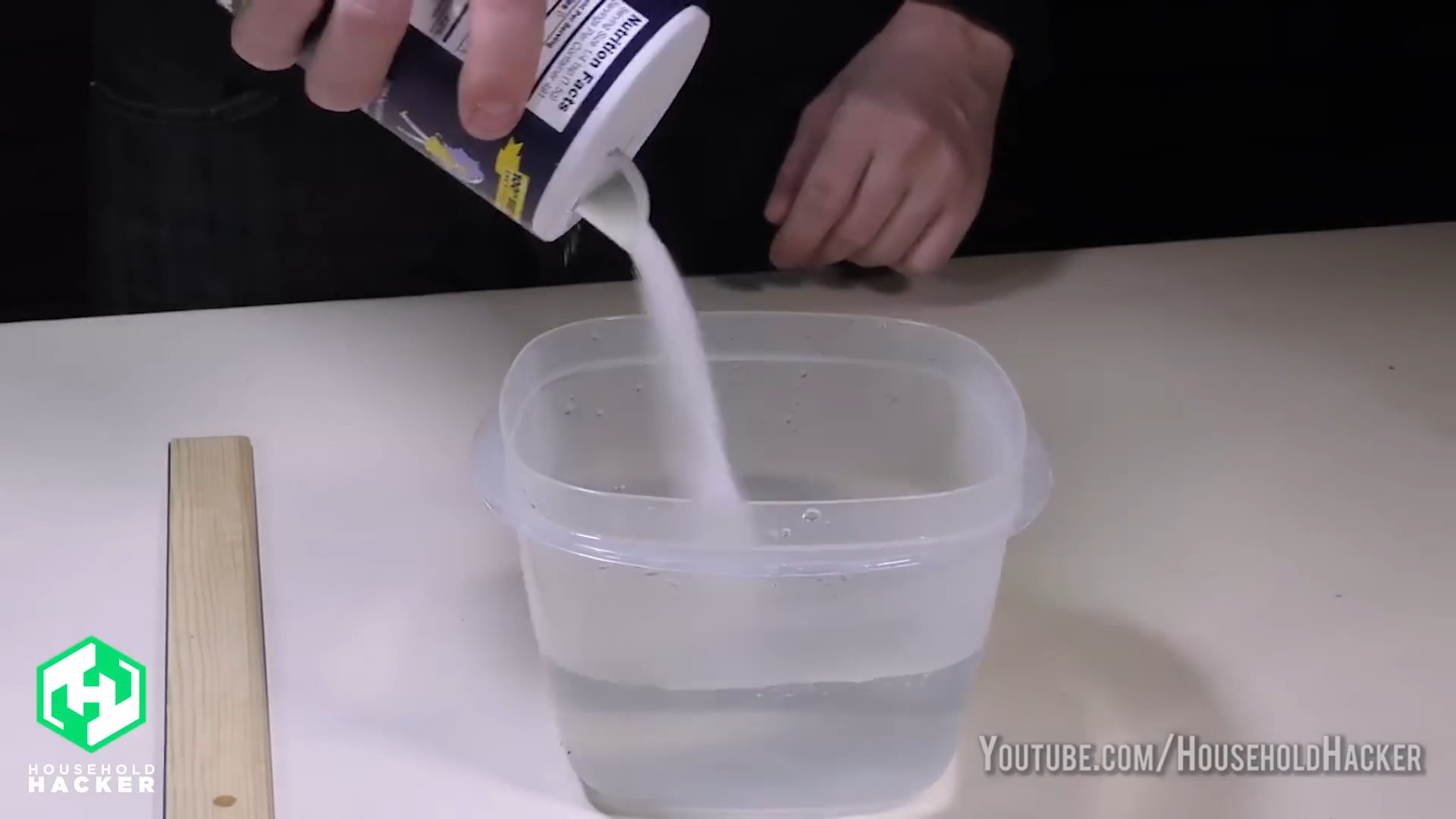Sponge cleaning hacks – who knew such a humble kitchen tool could unlock a world of cleaning efficiency? I’m always on the lookout for ways to make chores easier, and let me tell you, I’ve stumbled upon some seriously game-changing sponge tricks that I can’t wait to share with you!
Sponges have been around for centuries, evolving from natural sea sponges used by ancient Greeks and Romans for bathing and cleaning, to the synthetic wonders we rely on today. While their basic function remains the same, their potential is often underestimated. We tend to think of them as simple scrubbers, but with a little know-how, your trusty sponge can become a multi-tasking cleaning powerhouse.
Let’s face it, cleaning isn’t exactly anyone’s favorite pastime. We’re all looking for ways to save time and effort, and that’s where these sponge cleaning hacks come in. From sanitizing your microwave to tackling stubborn grime, these DIY tricks will not only simplify your cleaning routine but also help you save money on expensive cleaning products. So, grab your sponges, and let’s dive into some clever and effective ways to make your home sparkle!

DIY Sponge Cleaning Hacks: Extend the Life of Your Kitchen Companion!
Hey everyone! Let’s face it, sponges are the unsung heroes of our kitchens. They tackle everything from greasy pans to sticky countertops. But they also get pretty gross, pretty fast. Instead of constantly tossing them, I’m going to share some awesome DIY cleaning hacks to keep your sponges fresh, sanitized, and lasting longer. Get ready to save some money and reduce waste!
Hack 1: The Microwave Sanitization Method
This is probably the quickest and easiest way to kill bacteria lurking in your sponge. It’s my go-to for a daily refresh.
What you’ll need:
* Your dirty sponge
* Microwave-safe bowl or plate
* Water
Step-by-step instructions:
1. Rinse thoroughly: First, give your sponge a good rinse under running water to remove any loose food particles. You don’t want to microwave chunks of leftover dinner!
2. Soak and saturate: Place the sponge in your microwave-safe bowl or plate. Add enough water to completely submerge the sponge. Make sure it’s fully saturated – a dry sponge in the microwave is a fire hazard!
3. Microwave it: Pop the bowl into the microwave and heat on high for 2 minutes. This is usually enough to kill most bacteria. Be careful when removing the bowl, it will be hot!
4. Cool down and squeeze: Let the bowl cool down for a few minutes before carefully removing the sponge. Squeeze out any excess water.
5. Air dry: Allow the sponge to air dry completely. Don’t just toss it back into the sink wet – that’s a breeding ground for bacteria!
Important notes:
* Make sure your sponge doesn’t have any metal parts.
* The microwave method is great for daily sanitization, but it won’t remove stubborn stains or odors.
* Some people add a little lemon juice or vinegar to the water for extra cleaning power. I sometimes do this, but it’s not essential.
Hack 2: The Bleach Bath for Deep Cleaning
When your sponge is starting to look and smell a little funky, it’s time for a bleach bath. This is a more intense cleaning method, so use it sparingly.
What you’ll need:
* Your dirty sponge
* Bleach (unscented)
* Water
* Gloves (optional, but recommended)
* Bowl or sink
Step-by-step instructions:
1. Prepare the bleach solution: In your bowl or sink, mix 1 teaspoon of bleach with 1 gallon of water. It’s crucial to get the ratio right. Too much bleach can damage the sponge and be harmful.
2. Soak the sponge: Place the sponge in the bleach solution and let it soak for 5 minutes. Don’t soak it for longer than 10 minutes, as this can weaken the sponge fibers.
3. Rinse thoroughly: After soaking, rinse the sponge very, very thoroughly under running water until all traces of bleach are gone. This is super important! You don’t want to accidentally ingest bleach.
4. Squeeze and air dry: Squeeze out any excess water and allow the sponge to air dry completely.
Important notes:
* Always wear gloves when working with bleach to protect your skin.
* Never mix bleach with ammonia or other cleaning products, as this can create dangerous fumes.
* Use this method sparingly, as bleach can degrade the sponge over time.
* If your sponge is heavily soiled or has a strong odor, it might be time to replace it instead of using bleach.
Hack 3: The Vinegar Soak for Odor Removal
Vinegar is a natural disinfectant and deodorizer, making it perfect for freshening up your sponges. This is a gentler alternative to bleach.
What you’ll need:
* Your dirty sponge
* White vinegar
* Water
* Bowl or sink
Step-by-step instructions:
1. Prepare the vinegar solution: In your bowl or sink, mix equal parts white vinegar and water.
2. Soak the sponge: Place the sponge in the vinegar solution and let it soak for at least 1 hour, or even overnight for really stubborn odors.
3. Rinse thoroughly: Rinse the sponge thoroughly under running water.
4. Squeeze and air dry: Squeeze out any excess water and allow the sponge to air dry completely.
Important notes:
* Vinegar has a strong smell, but it will dissipate as the sponge dries.
* You can use this method as often as needed to keep your sponges smelling fresh.
* For extra cleaning power, you can add a few drops of essential oil to the vinegar solution. Lemon, tea tree, and lavender are all good choices.
Hack 4: The Dishwasher Deep Clean
Did you know you can clean your sponges in the dishwasher? It’s a great way to sanitize them along with your dishes!
What you’ll need:
* Your dirty sponge
* Dishwasher
Step-by-step instructions:
1. Rinse the sponge: Give your sponge a quick rinse to remove any large food particles.
2. Place in the dishwasher: Place the sponge on the top rack of your dishwasher. Make sure it’s not blocking any spray arms.
3. Run a normal cycle: Run your dishwasher on a normal cycle with detergent.
4. Dry the sponge: Once the cycle is complete, remove the sponge and allow it to air dry completely.
Important notes:
* Don’t wash your sponges with raw meat or egg residue.
* Make sure your sponge doesn’t have any metal parts.
* This method is best for sponges that are not heavily soiled.
Hack 5: The Baking Soda Scrub for Stubborn Stains
Baking soda is a natural abrasive that can help remove stubborn stains from your sponges.
What you’ll need:
* Your dirty sponge
* Baking soda
* Water
Step-by-step instructions:
1. Wet the sponge: Wet the sponge with water.
2. Sprinkle with baking soda: Sprinkle a generous amount of baking soda onto the sponge.
3. Scrub: Scrub the sponge against itself or a clean surface to work the baking soda into the fibers.
4. Rinse thoroughly: Rinse the sponge thoroughly under running water.
5. Squeeze and air dry: Squeeze out any excess water and allow the sponge to air dry completely.
Important notes:
* Baking soda can be slightly abrasive, so don’t scrub too hard.
* This method is great for removing stains from coffee, tea, or food.
Bonus Tip: Proper Sponge Storage
How you store your sponge is just as important as how you clean it. Here are a few tips:
* Don’t leave it in the sink: The sink is a breeding ground for bacteria. Instead, store your sponge in a well-ventilated area where it can dry completely.
* Use a sponge holder: A sponge holder will help keep your sponge elevated and allow air to circulate around it.
* Squeeze out excess water: After each use, squeeze out as much water as possible from your sponge.
* Replace regularly: Even with proper cleaning and storage, sponges will eventually wear out. Replace your sponge every 2-4 weeks, or sooner if it starts to smell or look worn.
Extending Sponge Life: A Summary
Here’s a quick recap of all the hacks we’ve covered:
* Daily Sanitization: Microwave for 2 minutes.
* Deep Cleaning: Bleach bath (1 tsp bleach per gallon of water for 5 minutes).
* Odor Removal: Vinegar soak (equal parts vinegar and water for at least 1 hour).
* Dishwasher Cleaning: Run through a normal cycle on the top rack.
* Stain Removal: Scrub with baking soda.
* Proper Storage: Keep it dry and ventilated.
By following these simple DIY cleaning hacks, you can extend the life of your sponges, save money, and keep your kitchen clean and healthy. Happy cleaning!

Conclusion
So, there you have it! These sponge cleaning hacks aren’t just about saving a few bucks; they’re about reclaiming control over the cleanliness of your home and extending the life of a kitchen staple. We’ve explored methods from simple microwave sanitization to more involved deep cleans, each designed to tackle the unique challenges sponges face. The beauty of these techniques lies in their simplicity and accessibility. You likely already have everything you need sitting in your pantry or under your sink.
Why is this a must-try? Because a clean sponge is a happy sponge, and a happy sponge contributes to a healthier home. Think about it: your sponge comes into contact with everything from raw chicken juices to sticky spills. If it’s not properly cleaned, it becomes a breeding ground for bacteria, potentially undoing all your hard work. These hacks offer a proactive approach to hygiene, ensuring that your cleaning efforts are actually effective.
But don’t stop there! Feel free to experiment and adapt these methods to suit your specific needs. For instance, if you’re dealing with a particularly stubborn stain, try soaking your sponge in a solution of baking soda and vinegar before microwaving or boiling it. Or, if you prefer a more natural approach, consider using tea tree oil or lemon juice for their antibacterial properties. You can even create a dedicated “cleaning sponge” for tougher jobs, reserving your newer sponges for lighter tasks.
Ready to ditch the dingy and embrace the dazzling? We wholeheartedly encourage you to give these sponge cleaning hacks a try. You’ll be amazed at how much life you can breathe back into your trusty cleaning companion. And more importantly, you’ll have the peace of mind knowing that you’re using a truly clean tool in your kitchen.
Don’t just take our word for it! We want to hear about your experiences. Share your results, variations, and any other tips you’ve discovered in the comments below. Let’s create a community of clean sponge enthusiasts and revolutionize the way we approach kitchen hygiene. Your insights could help others discover the joy of a sparkling clean sponge and a healthier home. Let us know which of these sponge cleaning hacks worked best for you!
Frequently Asked Questions (FAQs)
How often should I clean my sponge using these methods?
The frequency of cleaning depends on how often you use your sponge and what you use it for. As a general rule, you should sanitize your sponge at least every other day. If you use your sponge frequently or for cleaning up raw meat or other potentially contaminated surfaces, you should sanitize it daily. For deep cleaning methods like soaking in bleach or vinegar, aim for once a week. Remember, a proactive approach is key to preventing bacterial growth.
What’s the best method for sanitizing a sponge in the microwave?
To sanitize a sponge in the microwave, first, make sure your sponge is thoroughly wet. This is crucial to prevent it from catching fire. Place the wet sponge in the microwave and heat it on high for 1-2 minutes. The microwave’s heat will kill most bacteria and germs. Let the sponge cool slightly before handling it, as it will be very hot. Be cautious when removing it, as steam can escape.
Is it safe to use bleach to clean my sponge?
Yes, bleach is an effective disinfectant for sponges, but it should be used with caution. Always dilute the bleach properly. A common recommendation is to mix ¾ cup of bleach with one gallon of water. Soak the sponge in the solution for 5 minutes, then rinse it thoroughly with clean water. Ensure you wear gloves to protect your skin and avoid splashing bleach on your clothes or other surfaces. Never mix bleach with ammonia or other cleaning products, as this can create dangerous fumes.
Can I use vinegar instead of bleach to clean my sponge?
Absolutely! Vinegar is a natural and effective alternative to bleach. Its acidity helps to kill bacteria and remove odors. To clean your sponge with vinegar, soak it in undiluted white vinegar for at least 5 minutes. Then, rinse it thoroughly with clean water. You can also microwave the vinegar-soaked sponge for 1 minute for added disinfecting power. Vinegar is a great option for those who prefer a more eco-friendly and less harsh cleaning solution.
How do I get rid of bad smells in my sponge?
Bad smells in sponges are usually caused by bacteria and food particles. To eliminate odors, try soaking your sponge in a solution of baking soda and water. Mix 1/2 cup of baking soda with 1 quart of warm water and let the sponge soak for at least 15 minutes. You can also try soaking it in vinegar or lemon juice, both of which have deodorizing properties. After soaking, rinse the sponge thoroughly and allow it to air dry completely.
How long should I use a sponge before replacing it?
Even with regular cleaning, sponges will eventually wear out and become less effective. It’s generally recommended to replace your sponge every 2-4 weeks, depending on how frequently you use it and how well you maintain it. If your sponge starts to crumble, tear, or develop a persistent odor that doesn’t go away with cleaning, it’s time to replace it.
Are there any alternatives to traditional sponges that are more hygienic?
Yes, there are several alternatives to traditional cellulose sponges that are considered more hygienic. Silicone sponges are non-porous and less likely to harbor bacteria. Dishcloths can be washed in the washing machine, making them easier to keep clean. Scrub brushes are also a good option, as they can be easily sanitized and tend to dry faster than sponges. Consider experimenting with different options to find what works best for you and your cleaning habits.
Can I put my sponge in the dishwasher?
Yes, you can clean your sponge in the dishwasher. Place the sponge on the top rack of the dishwasher and run a normal cycle with detergent. The hot water and detergent will help to kill bacteria and remove food particles. However, keep in mind that this method may not be as effective as some of the other cleaning methods mentioned, and it may not remove all odors.
What are some signs that my sponge needs to be replaced immediately?
There are several signs that indicate your sponge needs to be replaced immediately. These include: a persistent foul odor that doesn’t go away with cleaning, visible mold or mildew growth, excessive wear and tear (crumbling or tearing), and a slimy or sticky texture even after cleaning. If you notice any of these signs, discard the sponge immediately and replace it with a new one.
How can I prevent my sponge from getting dirty and smelly in the first place?
Preventing your sponge from getting dirty and smelly requires a few simple habits. Rinse your sponge thoroughly with hot water after each use to remove food particles. Squeeze out excess water to help it dry faster. Store your sponge in a well-ventilated area to prevent moisture buildup. Avoid using your sponge to clean up raw meat juices or other potentially contaminated surfaces. And, of course, regularly sanitize and deep clean your sponge using the methods described above. By following these tips, you can extend the life of your sponge and keep it cleaner for longer.





Leave a Comment